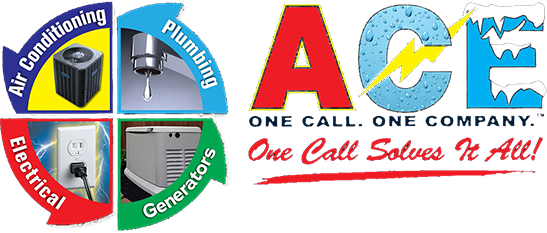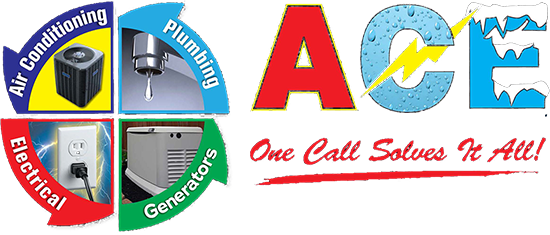Have you noticed that certain areas of your home are uncomfortably hot or cool at different parts of the day even though you have central heating and cooling? Have you ever fought for control of the thermostat because you like it cooler, but other people in the house like it warmer?
These are common issues that come with traditional central heating and air conditioning. However, there is a solution! Multi-zone heating and cooling systems offer many benefits for creating a more seamless home comfort experience.
What to Know About Multi-Zone Heating and Cooling Systems
Most homes have a central heating and cooling system connected to every room with one thermostat that controls the temperature everywhere. A multi-zone heating and cooling system divides your home into different areas or zones, and each is controlled by its thermostat using the existing ductwork or air vent setup installed. This gives you complete control over the temperature year-round in each room.
Calling this type of heating and cooling system a “system” can be confusing to homeowners. A multi-zone heating and cooling system can be used in conjunction with your current heating and cooling system depending on the layout of your home, what type of ductwork and vents are in place, and whether or not dampers can be installed to help “zone” each part of your home effectively.
Your heating and cooling system still runs through a central location but you control the temperature in each zone individually thanks to the proper placement of dampers throughout the ductwork. When you adjust the temperature in a room, the dampers associated with that zone will either open or close allowing hot or cool air to flow into the room.
When Does Zoning a Home Make Sense?
If you have a multi-floor home or use some rooms much less than others, a multi-zone heating and cooling system is essential.
For example, if you are in the master bedroom on the top floor, your un-zoned thermostat may say the home’s reached your desired temperature, but you’re still burning up in that bedroom because hot air rises and cold air sinks. But with a multi-zone system, you can keep running your air conditioner in the bedroom to get comfortable while the rooms downstairs are already cool.
Another reason multi-zone heating and cooling systems make sense is if there are particular areas of your home you don’t use as often as others. If you have a home office, but you only use it Monday through Friday, you’ll save on your energy bills by only cooling the rooms you use instead of the whole home. Another example might be a guest bedroom that doesn’t get much use or your oldest child’s bedroom when they head off to college.
Some other reasons why zoning a home makes sense include:
- If you have large windows, like bay windows–especially if they face the sun during the warmest part of the day during summer. This allows you to cool that room longer even though other rooms might already be cool. On the flip side, you may not need to run the heat in that zone as frequently because the sunlight will help warm the room in winter.
- If you have high ceilings, a zoned heating and cooling system in the winter months can help because heat rises are often trapped at the top of those rooms instead of circulating to properly warm the room. Running the heat in those rooms more frequently allows the trapped air in the top of the room to circulate, warming the room more evenly.
How Many Zones Does a Home Need?
Ideally, a home would only have two zones: one for the top floor and one for the bottom floor of the house plan. However, if you have more floors or need more individualized control over rooms, you can have more than two zones in a home, and each room can serve as its zone.
What Are the Benefits of Multi-Zone Heating and Cooling Systems?
There are some big benefits for homeowners who use a multi-zone system vs. a central air system.
Better Comfort
Central heating and cooling create a single, solid temperature throughout your home. That’s okay for some homes but not for every home, especially in homes where every family member seems to find comfort at a different temperature. Multi-zone heating and cooling systems create different temperatures in each zone to allow for individualized comfort.
Convenience
Many multi-zone heating and cooling systems allow you to adjust the temperature of your zone from the same room you’re already in. No more having to trek across the house to adjust the thermostat. A multi-zone system usually comes with remote controls that allow you to easily change the humidity levels, fan controls, and temperature without getting up and down to change things at the thermostat.
Energy Saving
Even though it may seem as though creating different temperatures would use more energy, that’s not the case! Since you can set different temperatures in each zone, you can turn down the temperature in rooms you don’t use as often in the winter and turn up the temperature in those same rooms during summer. That means you’ll spend less money treating the air in rooms that don’t need it.
Is Multi-Zone HVAC Worth It?
According to the U.S. Department of Energy, homeowners often use up to 40% of their utility costs on heating and cooling expenses. Studies conducted by the agency show that a homeowner may save up to 30% on heating and cooling costs by using a multi-zone HVAC system compared to a central air one. Depending on your home’s floorplan and how your family uses the heater and AC throughout the year, a multi-zone HVAC system might be worth installing in your home.=
What Are the Alternatives to Multi-Zone Heating and Cooling?
If you can’t use a multi-zone system in your home, you’ll still benefit from different types of heating and cooling systems depending on your home’s square footage, how you use your heat or air conditioning, and more. A heating and cooling company, like Ace Solves It All, can help determine the best type of system for your home if a traditional multi-zone heating and cooling one won’t work for you. Some of those systems include:
- Single-zone system: A single-zone heating and cooling system works just like a multi-zone system, except you install it in one room, such as the garage or an addition to your home that’s not hooked up to your central air system.
- Ductless system: A ductless system pumps warm or cool air directly into a room without zoning or ductwork. That room essentially has its unit installed that only works for that single area. This is a great alternative if you don’t want to zone the whole home or a single room.
Is It Time to Invest in a Multi-Zone Heating and Cooling System?
It just might! Investing in a multi-zone heating and cooling system will change how you stay comfortable at home. If you’re considering switching to a multi-zone heating and cooling system, you need Ace Solves It All in your corner. We have been proudly serving Orlando and the surrounding communities for three decades with AC repair services, plumbing, electrical, and more. We live by our motto of “one call solves it all.” For more information or to schedule a service, call us at (407) 499-8006.


